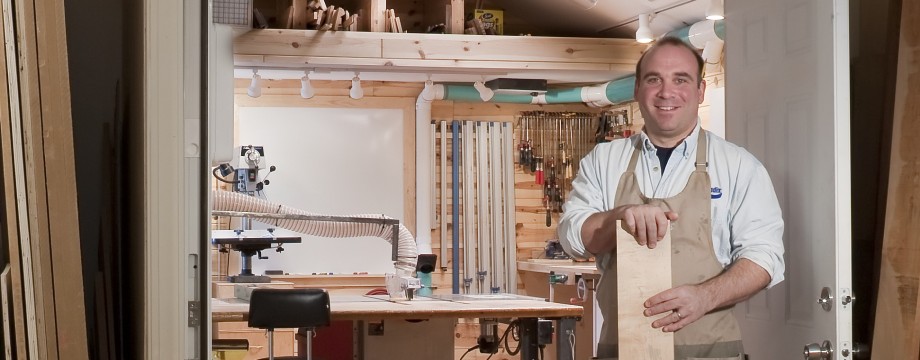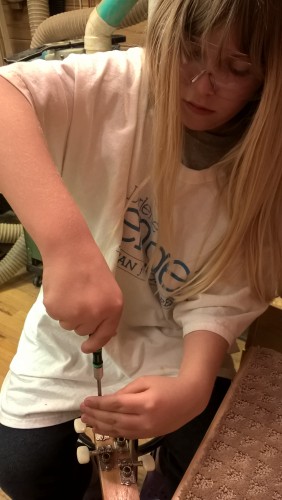This past weekend as planned my helper and I spent a couple more hours finishing up our new “Back to Basics” dulcimer. Annalise was excited about finishing this up – as was I – so shortly after breakfast we retreated to the shop to get back to work.
The Tuners and Tail
The tuners were first. The head was essentially ready, waiting only for the small pilot holes needed to affix the tuners. Annalise quickly installed all four tuners.
The plans suggest using 4 small pins that the strings loop over. I didn’t care for this look, so instead I crafted a small acoustic-guitar style tail that we glued to the bottom. I was slightly concerned about the stresses from the strings shearing this block off – especially because it was glued on after applying the finish. Therefore we carefully sanded a bit of the finish before gluing and then, for a bit of extra insurance, and because we thought they’d look nice, we added a couple brass screws to the tail.
Nut and Bridge
I crafted a nut and bridge out of a couple Corian sample blocks purchased last year. The band saw sliced neatly through the sample blocks. And with a bit of sanding on the oscillating belt sander, and some adjustments to the nut slot with a chisel, the pieces were installed and ready for notching.
Lessons Learned
We followed the original book design that calls for a guitar style headstock – with the string posts oriented vertically. Unfortunately the angle of the headstock is too shallow to pull the strings down into the nut slot with sufficient force to keep them there. I installed a couple Fender-style string trees – which mostly work – though there is still a tendency for a string to jump its slot if strummed too aggressively.
This isn’t tragic and I may put some more time into this in the future to improve the situation. However it’s still a very playable instrument that we’ve been having a lot of fun with.
Now that this is complete, we’re moving forward with a more traditional style with curved sides and a carved scroll headstock.
Next up: starting work on the Kimball book “hourglass” dulcimer…




